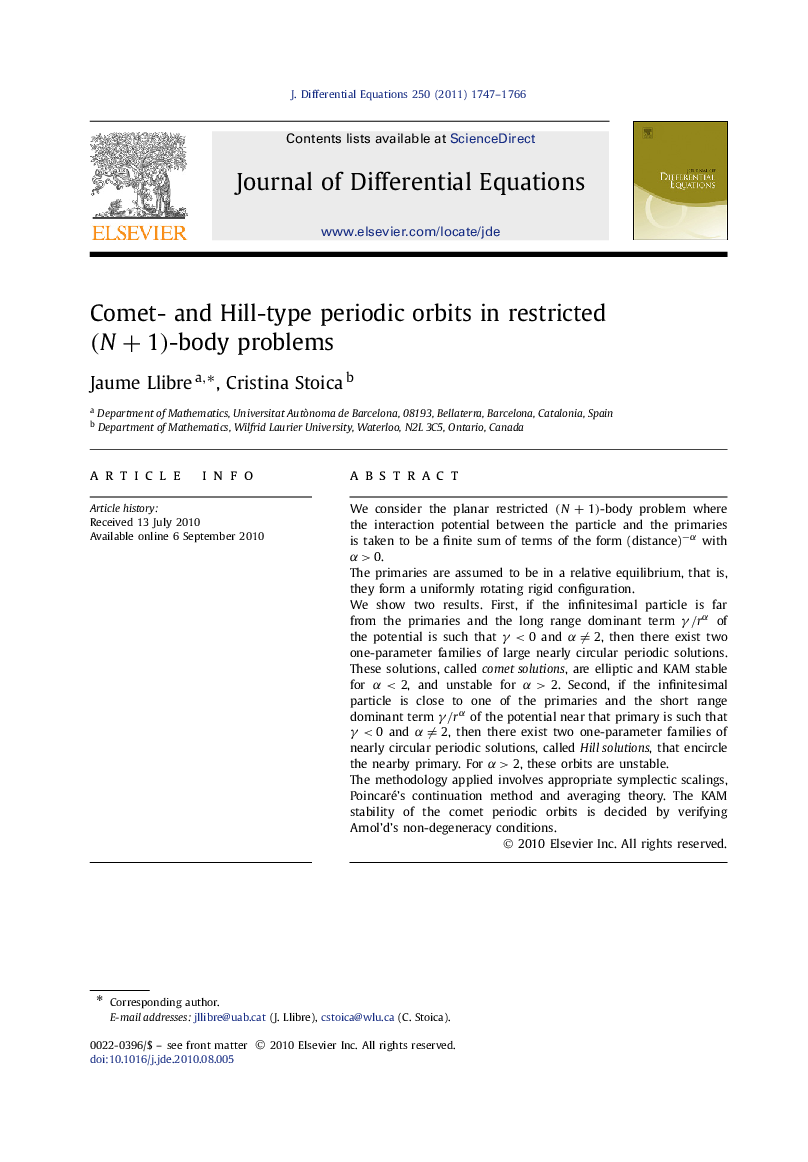| Article ID | Journal | Published Year | Pages | File Type |
|---|---|---|---|---|
| 4611477 | Journal of Differential Equations | 2011 | 20 Pages |
We consider the planar restricted (N+1)-body problem where the interaction potential between the particle and the primaries is taken to be a finite sum of terms of the form (distance)−α with α>0.The primaries are assumed to be in a relative equilibrium, that is, they form a uniformly rotating rigid configuration.We show two results. First, if the infinitesimal particle is far from the primaries and the long range dominant term γ/rα of the potential is such that γ<0 and α≠2, then there exist two one-parameter families of large nearly circular periodic solutions. These solutions, called comet solutions, are elliptic and KAM stable for α<2, and unstable for α>2. Second, if the infinitesimal particle is close to one of the primaries and the short range dominant term γ/rα of the potential near that primary is such that γ<0 and α≠2, then there exist two one-parameter families of nearly circular periodic solutions, called Hill solutions, that encircle the nearby primary. For α>2, these orbits are unstable.The methodology applied involves appropriate symplectic scalings, Poincaré's continuation method and averaging theory. The KAM stability of the comet periodic orbits is decided by verifying Arnol'd's non-degeneracy conditions.
